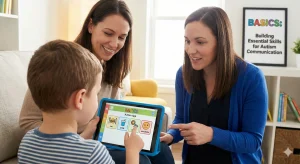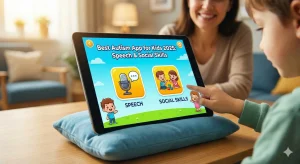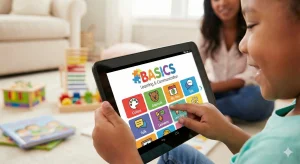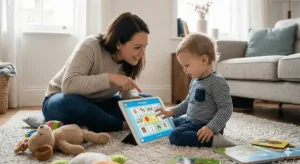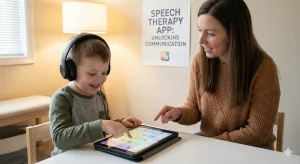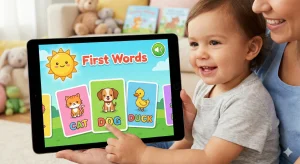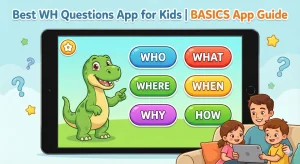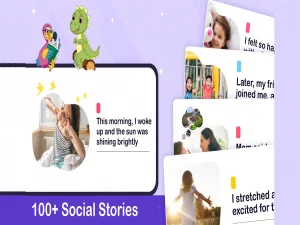Boost Your Child’s Creativity with Fun Right Brain Exercises
Last Updated: September 10, 2024
As parents and educators, we all want to see our children thrive and reach their fullest potential. One crucial aspect of this journey is fostering creativity, an essential skill that not only enriches a child’s mind but also prepares them for the challenges of the modern world. Creativity is more than just art and play; it’s about thinking outside the box, solving problems, and expressing oneself in unique ways. When children engage in creative activities, they develop critical thinking, emotional intelligence, and the ability to adapt to new situations.
However, in today’s educational landscape, traditional methods often prioritize left-brain activities, such as memorization and logical reasoning. While these skills are important, it’s equally vital to nurture the right side of the brain, where creativity and imagination flourish. This is where right-brain exercises come into play, offering a balanced approach to holistic development.
Understanding Right-Brain Learning
To truly appreciate the benefits of right-brain exercises, it’s important to understand what right-brain learning entails and how it differs from left-brain learning. This section will delve into the unique nature of right-brain learning, contrast it with left-brain learning, and highlight the importance of balancing both for a child’s well-rounded development.
What is Right-Brain Learning?
Right-brain learning refers to the cognitive processes that occur primarily in the right hemisphere of the brain. This side of the brain is associated with creativity, intuition, imagination, and holistic thinking. Right-brain learners tend to excel in activities that involve visual-spatial skills, such as art, music, and creative writing. They often think in pictures and patterns, making them adept at recognizing faces, interpreting body language, and understanding visual information.
Right-Brain vs. Left-Brain Learning
In contrast, left-brain learning is characterized by logical, analytical, and sequential thinking. The left hemisphere of the brain is responsible for tasks that involve language, mathematics, and critical reasoning. Left-brain learners are typically good at tasks that require step-by-step processing, such as solving math problems, reading, and writing in a structured manner.
Comparison of Right-Brain and Left-Brain Learning
| Aspect | Right-Brain Learning | Left-Brain Learning |
|---|---|---|
| Focus | Creativity, Imagination | Logic, Analysis |
| Activities | Art, Music, Storytelling, Nature Play | Math, Reading, Writing, Logical Puzzles |
| Benefits | Emotional Intelligence, Adaptability | Critical Thinking, Problem-Solving |
| Learning Style | Holistic, Visual-Spatial | Sequential, Verbal |
Benefits of Right-Brain Exercises
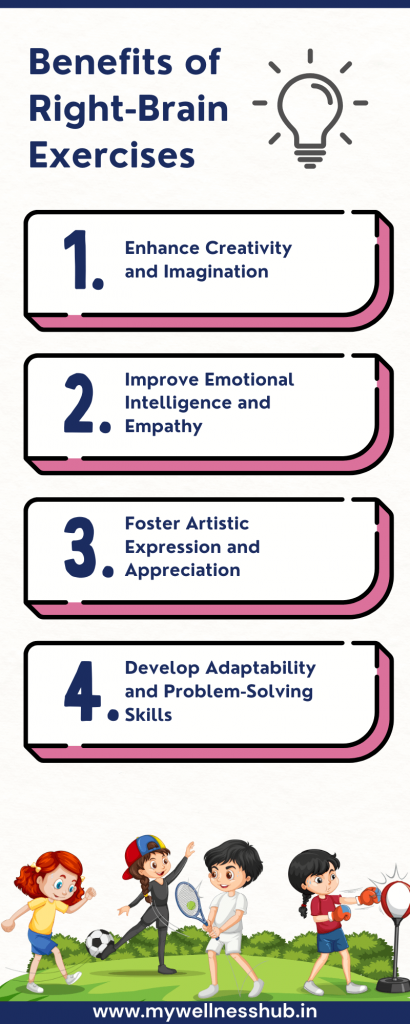
Right-brain exercises offer numerous benefits that contribute to a child’s overall development. This section will explore how these exercises can enhance creativity, improve emotional intelligence, foster artistic expression, and develop adaptability and problem-solving skills. These advantages make right-brain exercises an essential part of a balanced learning approach.
Enhance Creativity and Imagination
One of the most significant benefits of right-brain exercises is the enhancement of creativity and imagination. Activities that stimulate the right hemisphere of the brain, such as drawing, storytelling, and music, help children think outside the box and develop innovative ideas. These creative skills are not only valuable in artistic pursuits but also in everyday problem-solving and decision-making processes. Encouraging creativity early on can lead to a lifelong love for learning and exploration.
Improve Emotional Intelligence and Empathy
Right-brain exercises can also play a crucial role in improving emotional intelligence and empathy. The right hemisphere is involved in processing emotions and understanding the feelings of others. By engaging in activities like role-playing, reading emotional stories, and participating in group discussions, children can develop a deeper sense of empathy and better manage their own emotions. This emotional awareness is vital for building strong, healthy relationships and navigating social situations effectively.
Foster Artistic Expression and Appreciation
Artistic expression is another key benefit of right-brain exercises. Engaging in creative activities such as painting, music, dance, and drama allows children to express themselves in unique and meaningful ways. These activities not only provide an outlet for emotions but also help children appreciate the beauty and diversity of the arts. Artistic endeavors can boost self-esteem and provide a sense of accomplishment, fostering a positive self-image and a lifelong appreciation for the arts.
Develop Adaptability and Problem-Solving Skills
Lastly, right-brain exercises help develop adaptability and problem-solving skills. Creative thinking encourages children to approach challenges from different angles and come up with multiple solutions. Activities like puzzles, open-ended projects, and brainstorming sessions enhance cognitive flexibility and the ability to adapt to new situations. These skills are essential for success in an ever-changing world, where adaptability and innovative thinking are highly valued.
Practical Right-Brain Exercises for Kids
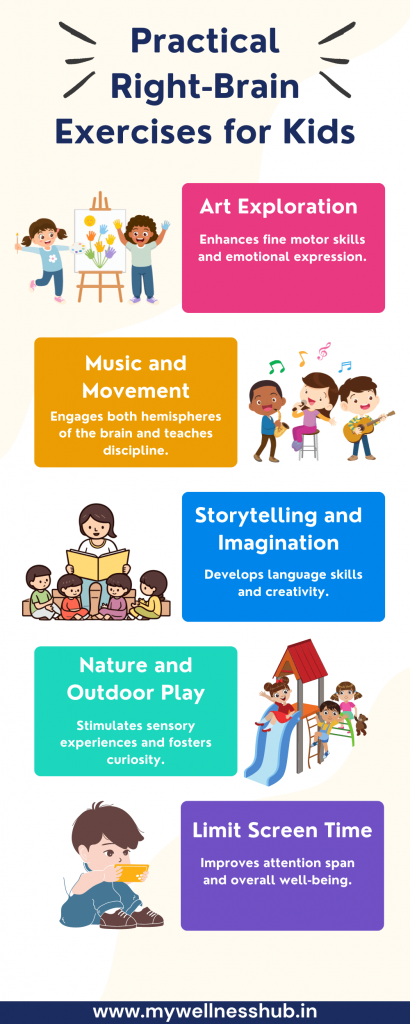
Now that we understand the benefits of right-brain exercises, let’s explore some practical activities that can help boost your child’s creativity and overall development. These exercises are designed to be engaging and enjoyable, making it easy to incorporate them into your child’s daily routine.
Art Exploration
Encouraging your child to explore various forms of art, such as drawing, painting, and sculpting, can significantly enhance their right-brain development. Provide them with a variety of art supplies and let their imagination run wild.
Benefits:
- Enhances Fine Motor Skills: Activities like drawing and painting improve hand-eye coordination and dexterity.
- Emotional Expression: Art allows children to express their feelings in a safe and constructive way.
- Creative Thinking: Creating art helps children think outside the box and develop unique ideas.
Music and Movement
Introducing your child to musical instruments, singing, and dancing can be a fun way to engage their right-brain faculties. Music and movement activities stimulate both hemispheres of the brain, enhancing overall cognitive function.
Benefits:
- Engages Both Brain Hemispheres: Music stimulates neural connections that are essential for brain development.
- Teaches Discipline: Learning an instrument requires practice and patience, instilling discipline.
- Enhances Social Skills: Group activities like choir singing or dance classes foster teamwork and social interaction.
Storytelling and Imagination
Encouraging storytelling, reading, and imaginative play can significantly boost your child’s creativity. These activities stimulate the right brain by engaging children in creating and visualizing new worlds and scenarios.
Benefits:
- Develops Language Skills: Storytelling and reading improve vocabulary and comprehension.
- Critical Thinking: Creating stories encourages children to think critically about plot and character development.
- Creativity: Imaginative play fosters creative problem-solving and innovative thinking.
Nature and Outdoor Play
Spending time in nature and engaging in unstructured outdoor activities is crucial for right-brain development. Nature provides a rich sensory experience that stimulates curiosity and creativity.
Benefits:
- Stimulates Sensory Experiences: Nature engages all five senses, promoting sensory development.
- Fosters Curiosity: Exploring the outdoors encourages children to ask questions and learn about their environment.
- Promotes Physical Health: Outdoor play supports physical fitness and overall well-being.
Limit Screen Time
While technology can be educational, it’s important to balance screen time with real-world experiences. Encouraging your child to spend less time on screens and more time engaging in creative activities can enhance their right-brain development.
Benefits:
- Improves Attention Span: Reducing screen time can help children focus better on tasks.
- Better Sleep Quality: Less screen time, especially before bed, can improve sleep patterns.
- Overall Mental Well-Being: Engaging in real-world activities can reduce stress and promote a healthy lifestyle.
The Untapped Power of Photogenic Memory
In the middle of our exploration into right-brain exercises, it’s essential to highlight a remarkable ability that many children possess: photogenic memory. Understanding this capability and knowing how to harness it can significantly enhance your child’s right-brain development and overall learning experience.
What is Photogenic Memory?
Photogenic memory, also known as eidetic memory, is the ability to recall images, sounds, or objects with high precision after only a few exposures. This type of memory is particularly strong in children, allowing them to remember details from visual stimuli with remarkable clarity. Photogenic memory is a key aspect of right-brain learning, as it involves visual and spatial processing, which are functions primarily handled by the right hemisphere of the brain.
The Role of Photogenic Memory in Right-Brain Learning
Photogenic memory plays a vital role in right-brain learning by enhancing a child’s ability to remember and process visual information. This capability supports various creative and cognitive activities, such as:
- Art and Design: Children with strong photogenic memory can visualize and reproduce images with accuracy, making them adept at drawing, painting, and other visual arts.
- Spatial Awareness: This type of memory helps in understanding spatial relationships, which is crucial for activities like building, puzzle-solving, and navigation.
- Reading and Storytelling: Photogenic memory aids in remembering scenes, characters, and plot details, enhancing comprehension and imaginative storytelling.
Harnessing and Nurturing Photogenic Memory in Children
To fully leverage the power of photogenic memory, parents and educators can implement several strategies to nurture and develop this ability in children:
- Visual Learning Tools
- Use flashcards, picture books, and visual aids to teach new concepts. These tools can make learning more engaging and memorable.
- Encourage children to create mind maps and visual diagrams to organize information and ideas.
- Art and Craft Activities
- Provide opportunities for children to engage in art projects that require attention to detail, such as painting, drawing, and sculpting.
- Encourage them to recreate scenes or objects from memory to strengthen their visual recall.
- Memory Games
- Introduce games that challenge and enhance photogenic memory, such as matching games, jigsaw puzzles, and memory card games.
- Play “I Spy” games that focus on observing and remembering details in the environment.
- Storytelling and Visualization
- Encourage children to tell stories or describe scenes in detail, which can help strengthen their memory and imagination.
- Practice guided visualization exercises where children imagine and describe vivid scenarios.
- Outdoor Exploration
- Take children on nature walks and encourage them to observe and remember different elements of their surroundings.
- Engage them in activities like bird watching, where they can identify and recall different species.
Lifelong Benefits of Right-Brain Learning
As we reach the conclusion of our exploration into right-brain exercises, it’s important to consider the long-term advantages that right-brain development offers. These benefits extend well beyond childhood, influencing various aspects of life and contributing to a well-rounded, fulfilling existence.
Enhanced Creativity and Innovation
One of the most significant lifelong benefits of right-brain learning is enhanced creativity and innovation. Individuals who engage in right-brain activities from a young age are more likely to think outside the box and develop unique solutions to problems. This creative mindset is invaluable in both personal and professional settings. Whether pursuing careers in the arts, technology, or entrepreneurship, the ability to innovate and generate fresh ideas can set individuals apart and drive success.
Improved Emotional Intelligence
Right-brain learning also plays a crucial role in developing emotional intelligence. This involves the ability to understand and manage one’s emotions, as well as empathize with others. Improved emotional intelligence leads to better communication, stronger relationships, and more effective conflict resolution. These skills are essential for personal happiness and professional success, helping individuals navigate the complexities of human interactions with ease and sensitivity.
Greater Adaptability and Resilience
Another key benefit of right-brain development is greater adaptability and resilience. Right-brain thinkers are often more comfortable with ambiguity and change, making them better equipped to handle life’s uncertainties. This adaptability is crucial in today’s fast-paced, ever-changing world. Resilience, the ability to bounce back from setbacks, is also enhanced through right-brain activities that encourage creative problem-solving and flexible thinking. These qualities enable individuals to thrive in dynamic environments and overcome challenges with confidence.
Lifelong Appreciation for Artistic Expression
Finally, fostering right-brain development instills a lifelong appreciation for artistic expression. Engaging in creative activities such as painting, music, and dance not only provides immediate enjoyment but also enriches one’s life over the long term. This appreciation for the arts can lead to a more fulfilling, culturally enriched life. Moreover, artistic pursuits offer a therapeutic outlet for stress and a means of personal expression that can enhance mental well-being.
Incorporating Right-Brain Learning at Home and School
Tips for Parents
Provide a Variety of Creative Materials and Opportunities
Creating an environment that nurtures creativity starts with providing access to a range of materials. Stock up on art supplies like crayons, paints, clay, and craft paper. Encourage your child to explore different mediums and techniques, and provide them with opportunities to engage in creative projects regularly.
Encourage Open-Ended Play and Listen to Children’s Ideas
Open-ended play allows children to use their imagination without predefined rules or outcomes. Toys like building blocks, dolls, and costume pieces can inspire creative scenarios and role-playing. Additionally, listen to your child’s ideas and encourage them to pursue their creative interests. This support fosters confidence and a willingness to explore new concepts.
Tips for Educators
Create a Creative-Friendly Classroom Environment
Design a classroom that inspires creativity by incorporating various creative zones, such as an art corner, a reading nook, and a music area. Use vibrant colors, display student artwork, and ensure that there are plenty of materials available for spontaneous creative activities.
Incorporate Right-Brain Activities into the Curriculum
Integrate right-brain exercises into the daily curriculum to balance the focus on logical and analytical tasks. Activities like storytelling, group projects, and interactive art lessons can stimulate the right brain. Additionally, use teaching methods that encourage creative thinking, such as brainstorming sessions and open-ended questions.
Practical Right-Brain Exercises: At Home vs. In School
| Setting | Exercise | Description |
|---|---|---|
| Home | Art Exploration | Drawing, painting, sculpting with various materials. |
| Home | Storytelling and Imagination | Reading stories, creating own stories, engaging in imaginative play. |
| Home | Nature and Outdoor Play | Unstructured play, nature walks, observing wildlife. |
| School | Music and Movement | Playing instruments, singing, dancing in group activities. |
| School | Creative Classroom Environment | Art corners, reading nooks, vibrant displays of student artwork. |
| School | Right-Brain Activities in Curriculum | Storytelling sessions, interactive art lessons, group projects. |
Conclusion
Incorporating right-brain exercises into your child’s daily routine is essential for fostering creativity, emotional intelligence, and adaptability. These activities help children develop unique problem-solving skills, express their emotions creatively, and engage in meaningful learning experiences. Right-brain exercises like art exploration, music and movement, storytelling, and nature play offer many benefits that go beyond traditional academic learning.
As parents and educators, you play a crucial role in nurturing these skills. By providing a variety of creative materials, encouraging open-ended play, and integrating right-brain activities into your child’s routine, you can create an inspiring environment. At Wellness Hub, we support you on this journey with resources and programs designed to foster holistic development. Visit our website to explore more tips and resources. Start incorporating these exercises today and see the positive impact on your child’s overall development.
Frequently Asked Questions:
1. What are right-brain exercises for kids?
Right-brain exercises for kids are activities that stimulate the right hemisphere of the brain, which is responsible for creativity, imagination, and holistic thinking. Examples include drawing, painting, music, storytelling, and nature play.
2. How do right-brain exercises enhance creativity in children?
Right-brain exercises enhance creativity by encouraging children to think outside the box and explore new ideas. Activities like art and music help develop creative thinking and problem-solving skills, allowing children to express themselves in unique ways.
3. Why is it important to balance right-brain and left-brain learning?
Balancing right-brain and left-brain learning is important because it promotes holistic development. While left-brain activities focus on logic and analysis, right-brain exercises foster creativity and emotional intelligence. Together, they help children develop a well-rounded skill set.
4. What are the lifelong benefits of right-brain learning?
The lifelong benefits of right-brain learning include enhanced creativity and innovation, improved emotional intelligence, greater adaptability, and a lifelong appreciation for artistic expression. These skills are valuable in both personal and professional settings.
5. How can parents support right-brain learning at home?
Parents can support right-brain learning at home by providing a variety of creative materials, encouraging open-ended play, and listening to their children’s ideas. Activities like drawing, storytelling, and nature exploration can help nurture right-brain development.
6. What are some effective right-brain activities for classrooms?
Effective right-brain activities for classrooms include art projects, music and movement exercises, storytelling sessions, and nature-based learning. Teachers can create a creative-friendly environment and integrate these activities into the curriculum to stimulate right-brain development.
7. How can I incorporate right-brain activities into my child’s daily routine?
You can incorporate right-brain activities into your child’s daily routine by setting aside time for creative play, providing access to art and music supplies, and encouraging outdoor exploration. Balancing screen time with real-world activities also supports right-brain development.
8. What role does photogenic memory play in right-brain learning?
Photogenic memory, or eidetic memory, is the ability to recall images with high precision. It plays a significant role in right-brain learning by enhancing a child’s ability to remember and process visual information, which supports various creative and cognitive activities.
9. How does Wellness Hub support right-brain development in children?
Wellness Hub supports right-brain development in children through various resources and programs designed to foster creativity and holistic growth. Our speech therapy programs and educational resources provide parents and educators with the tools they need to nurture right-brain skills.
10. What are the benefits of limiting screen time for right-brain development?
Limiting screen time benefits right-brain development by improving attention span, sleep quality, and overall mental well-being. Balancing digital activities with real-world experiences encourages children to engage in creative and sensory-rich activities, which support right-brain growth.
About the Author:
Anuradha Karanam
Speech-language pathologist (7+ years of experience)
Anuradha Karanam is a skilled speech-language pathologist with over 6 years of experience. Fluent in Tamil, Telugu, Hindi, and English, she specializes in parent counseling, speech sound disorders, fluency assessment, and speech-language evaluations. Anuradha excels at working with children with developmental disorders, offering creative and effective therapy programs. Currently at Wellness Hub, she holds a BASLP degree and is registered with the RCI (CRR No A85500). Her patience, ambition, and dedication make her a trusted expert in her field.
Book your Free Consultation Today
Parent/Caregiver Info:
Client’s Details:
* Error Message

